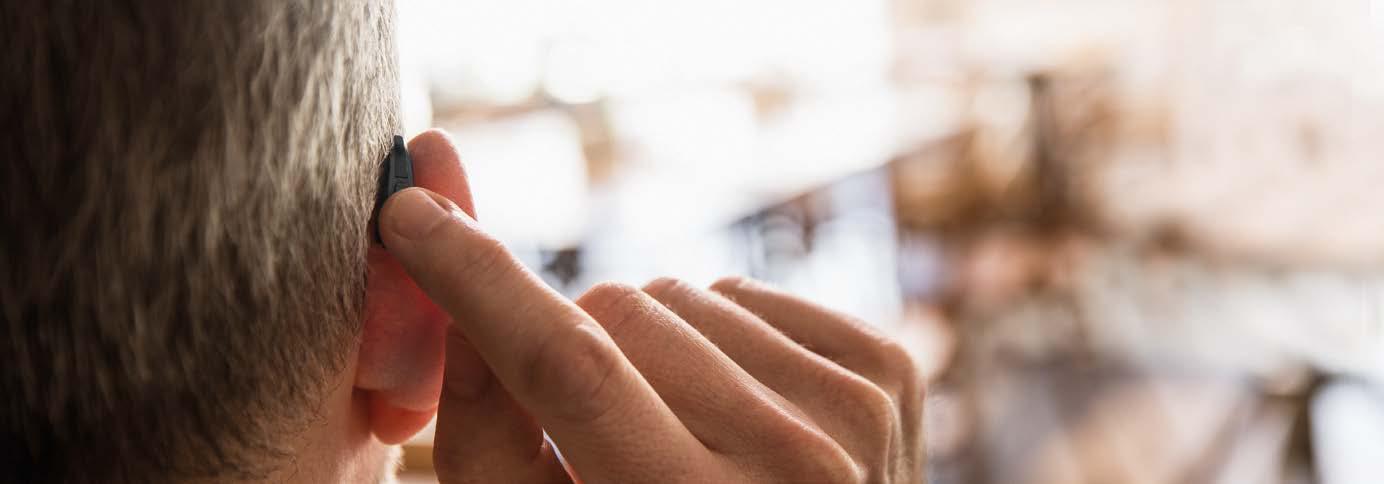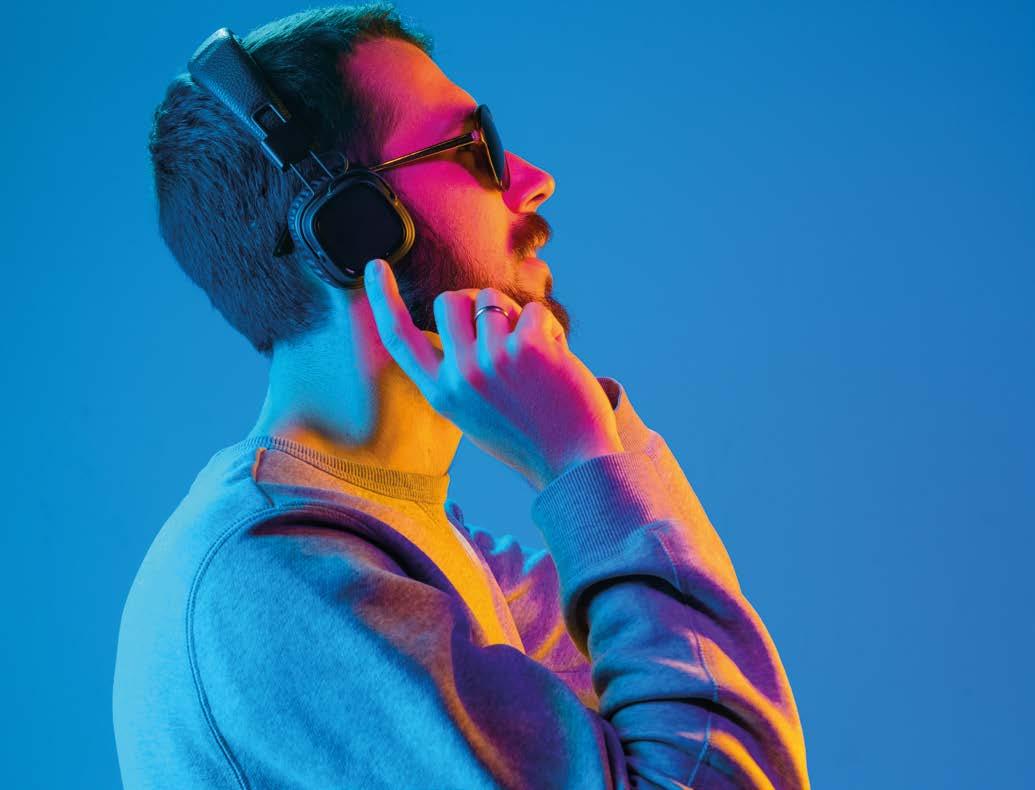
2 minute read
LIFE-CHANGING TECHNOLOGIES
Life-Changing
TECHNOLOGIES
All of our social interactions are based on communication, so hearing loss can be a major hindrance to sociability. Someone with hearing loss may choose to isolate themselves in the hopes of avoiding situations where they might have trouble hiding their condition.
It’s estimated that one in ten people over the age of 50 is living with hearing loss. For people aged 65 and older, this figure climbs to 35–40%1. By 2050, it’s estimated that 15% of the world’s population will be over the age of 65, and that means a lot of people will be coping with hearing loss2. For several years now, people in the hearing health industry have come up with many innovations to help people stay connected to the world around them.
The Evolution of Hearing Aids
In the 2000s, the miniaturization of RITE (ReceiverIn-The-Ear)3 hearing aids made the devices more discreet, reducing the stigma of wearing hearing aids. The acoustic performance of these hearing aids also made it easier for users to get used to the amplification.
An assessment by an audioprosthetist is required to determine which hearing aid suits the patient’s needs. Of course, outside technological advances have guided the evolution of hearing aids as well. With the advent of Bluetooth technology in the 2000s, hearing aids users could stream voices and music from Bluetooth-enabled devices to their hearing aids4. The use of this technology has also reduced listening difficulties on the telephone by using systems that transmit the audio signal from the cell phone to the hearing aids. Over the years, hearing aids have evolved greatly. Now more than ever, we have more natural access to the sounds around us. Technology has also improved hearing aids’ ability to transmit sounds well, even in noisy environments. This can be extremely helpful for workers5. Some hearing aids can also connect to mobile apps to provide different features allowing certain settings and providing access to additional options (e.g. listening to a movie on a tablet device). Technology continues to surprise us, and there’s no doubt that hearing aids will keep evolving to meet people’s needs.
Charles-Edouard Basile
Directeur développement des affaires
References:
1. World Health Organization – Global estimates on prevalence of hearing loss. 2. United Nations, Population Division, Department of Economics and Social
Affairs – World Population Prospects: The 2017 Revision. 3. Tour des nouveautés 2007, Audio Infos – no. 110 - p.17–27 – April 2007 4. Veille Technologique, Les Cahiers de l’Audition - Vol. 20 - no. 3 - p.59–62 -
May/June 2007 5. Le Goff, N., Wendt, D., Lunner, T., Ng, E. Opn Clinical Evidence. Whitepaper. 2016.










